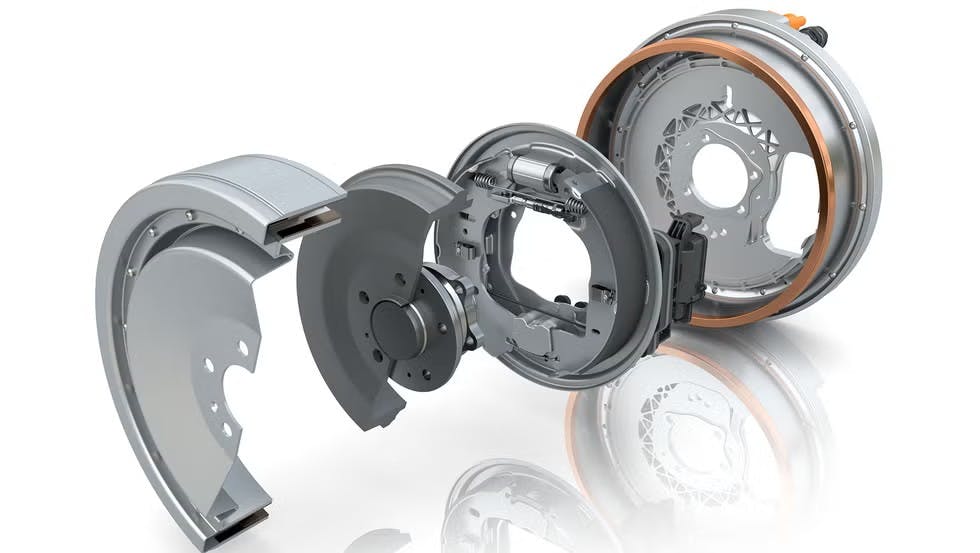
Brake It Till You Make It: Continental’s Drive-Brake Revolution
The evolution of electric vehicle (EV) technology has been an ongoing journey of innovation, with manufacturers constantly seeking ways to improve efficiency, reduce weight, and integrate advanced features. One of the latest breakthroughs comes from the renowned German automotive supplier, Continental, which is close to bringing its innovative hub motor concept to market. This technology integrates braking components within the wheel hub motor, offering numerous advantages over conventional EV propulsion systems. With production targeted for 2028, Continental’s Drive-Brake Unit is poised to revolutionize the way EVs are designed and manufactured.
A New Take on an Old Idea
The concept of in-wheel hub motors is not new. In fact, it dates back over 120 years to when Ferdinand Porsche showcased an early version of this technology. However, Continental’s approach takes the concept several steps further by integrating braking elements directly into the motor itself. This allows for a more compact and efficient system that eliminates the need for separate brake assemblies. The result is a lighter, more streamlined vehicle with improved energy efficiency and performance.
Continental and DeepDrive Partnership
To bring this ambitious project to life, Continental has partnered with DeepDrive, a Munich-based motor producer known for its cutting-edge propulsion technology. DeepDrive’s patented dual-rotor, radial-flux motor serves as the foundation for Continental’s Drive-Brake Unit. This collaboration allows for a seamless combination of propulsion and braking, making it a cost-effective solution for automakers looking to optimize their EV designs.
Key Features and Benefits of the Drive-Brake Unit
Continental’s Drive-Brake Unit presents several groundbreaking advantages:
- Integrated Braking Options: The system supports both disc and drum brakes, with either hydraulic or dry brake-by-wire configurations, providing flexibility based on automaker preferences.
- Improved Efficiency: By integrating the braking and propulsion system into a single unit, the technology reduces energy loss and allows for a more compact vehicle design.
- Smaller Battery Requirements: Due to its efficiency gains, vehicles using this technology may require a smaller battery while maintaining the same driving range, potentially lowering production costs.
- All-Wheel Drive and Torque Vectoring: The hub motors allow for precise power distribution, improving vehicle handling, stability, and overall performance.
- Reduced Weight and Complexity: Traditional EV drivetrains require multiple components, including a central motor, drive shafts, and braking systems. By combining these elements into a single unit at each wheel, Continental’s solution simplifies vehicle construction and reduces mass.
- Potential for Further Integration: Continental suggests that additional chassis components, such as air suspension hardware, could also be integrated into the Drive-Brake Unit, further streamlining vehicle architecture.
Production and Market Readiness
Continental and DeepDrive are confident that this technology will be road-ready soon, with a European automaker reportedly close to signing a contract for production beginning in 2028. This marks a significant milestone for hub motor technology, which has long been considered an exciting but underutilized concept in mass-market EV production.
Addressing Braking Challenges in EVs
One of the biggest challenges in modern EVs is brake corrosion, particularly on rear disc brakes. Since EVs rely heavily on regenerative braking, traditional friction brakes are often underutilized, leading to rust and requiring costly protective coatings. Interestingly, drum brakes are experiencing a resurgence in the EV market due to their enclosed design, which offers better protection from environmental factors and reduces the risk of corrosion.
Continental recognizes this shift and has already announced plans to produce drum brakes for a battery-electric truck starting in 2026. This aligns with the company’s philosophy of offering multiple braking solutions tailored to the needs of different vehicle segments.
Competitive Landscape
While Continental is leading the charge with its Drive-Brake Unit, it is not alone in exploring hub motor technology. Other automotive suppliers, such as ZF and ADVICS, are also working on similar solutions. However, Continental’s long history in automotive braking and electronic systems, combined with DeepDrive’s motor expertise, positions it as a strong contender to be first to market with a production-ready solution.
A Step Toward the Future
Continental’s innovative Drive-Brake Unit represents a significant leap forward in EV technology. By combining propulsion and braking into a single, highly efficient package, the company is paving the way for lighter, more efficient, and better-performing electric vehicles. If production proceeds as planned in 2028, this technology could become a game-changer for automakers looking to optimize their EV platforms.
As the industry continues to evolve, innovations like Continental’s Drive-Brake Unit will play a crucial role in shaping the next generation of electric mobility. With potential benefits ranging from improved efficiency and reduced weight to all-wheel drive capabilities and torque vectoring, the future of EVs looks more promising than ever.








